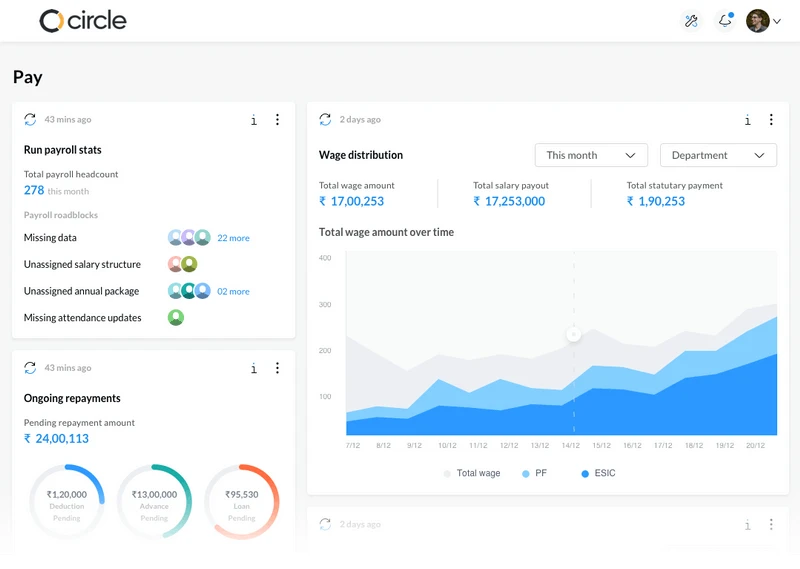The Equal Remuneration Act (ERA) eliminates the gender pay gap for employees in similar job titles regardless of gender, wage scale, social security, or national origin. It was enacted in 1976 to protect workers from discrimination based on sex. Consequently, the Act protects workers from employment exploitation regarding wages and other aspects. The Act applies to all employers regardless of business size or job positions. Applicable positions include both manual and non-manual labour. The Act also covers hotel accommodations, reimbursement for travel expenses, and compensation for temporary work-related postings/relocations.
As per this law, if the number of employees is less than 1000, payment must be made before the 7th day of each month, and if the number of employees is more significant than 1000, payment should be made by the 10th day of the month.
Why Is the Act Important to Employers and Employees?
- Ensures Fairness and Equality at the Workplace
The ERA ensures employees are equally reimbursed for their job titles. It includes multiple factors, such as gender and other forms of discrimination, that can interfere with fair compensation for a job. Fringe benefits, such as leave, holidays, and other allowances, are also protected under the ERA. The employment laws such as the minimum wages act of 1948 ensure that all workers get decent pay to maintain their traditional livelihood.
- Encourages Business Practices That Respect Employees
The ERA encourages government employers to adopt business practices that respect all employees regardless of sex. Companies that do so have reported enhanced motivation amongst employees as they feel they’re being respected and rewarded based on their job performance alone. The central government has also ensured no employer practises gender discrimination and promotes the wage gap. Employers must adhere to the laws and maintain an equal level of wages.
- Protects Women from Discrimination in Wages & Benefits
Women have long faced discrimination and prejudice regarding wages and benefits in the workplace. Without unjustified differences, the ERA ensures both genders receive equitable treatment regarding workplace benefits, including wages, vacation days, sick leave, health coverage, retirement plans, etc.
Based on recent research, the typical monthly earnings in India amounted to INR 32,840 (equivalent to around US$422).
What Are the Main Provisions of the Act?
- Prohibition of Discrimination
The ERA prohibits discrimination based on gender when it comes to remuneration (pay) for any job regardless of occupation. It’s illegal for employers to compensate people differently based on their sex alone. The basis of sex or gender is prohibited from any consideration when determining pay and other employment benefits. Equal remuneration drives company culture to offer value to employees without sexual orientation.
- Provision for Wage Revision
The Act mandates a wage revision from time to time – based on cost-of-living changes and wage history – to give equal wages for different types of work done by men and women alike. It ensures that men and women are given equal wages when they hold equal positions in the same organisation.
- Wage Fixing Authority
The Act also provides for a wage-fixing authority appointed by the government whose responsibility is to ensure that wages are not being “inadequately fixed” and are appropriate compensation against various types of jobs being performed at workplaces throughout India. Competitive compensation strategy in job postings must also mention the basis of the wage code and its applicability to both men and women.
If a surcharge is applied, an additional 4% tax for health and education purposes will be charged on both the income tax and the surcharge amount.
- Encouraging Better Ratios Between Male & Female Wages
All qualified individuals, including men and females, should get equal wages, and female candidates do not face discrimination on training, transfer, or promotion. Benefits such as dearness allowance, minimum wage rates, or gasoline allowances should be similar for all in similar work nature or responsibilities. The bonus must be given at the lowest percentage of 8.33% and the highest percentage of 20%.
- Penalties for Non-Compliance with the Act
Employers not complying with the Equal Pay Act face severe penalties, such as not receiving wages for business days, liquidated damages, and fines. Affirmative defences may shield employers from liability if they can prove that their pay structure is based on seniority or merit rather than gender. Federal government employees may bring potential claims in civil court for non-compliance with the Act. However, employers must show compensation in job postings to promote fair wages to all.
- Gender Equality
The ERA is a landmark legislation that ensures gender equality in the workplace. Ensuring equal pay for equal work helps close the gender gap in wages and improves economic security for women. The Act also strengthens India’s commitment to promoting gender equality and empowering women by providing better job opportunities and improved financial security.
Implications of the Equal Remuneration Act
- Equal Distribution of Working Hours
The ERA provides statutory protection against gender discrimination relating to working hours. It means employers must keep claim criteria similar in working hours for men and women performing comparable work. If an employer extends working days for female employees, it must do the same for male employees. Domestic and foreign companies must also adhere to the provisions of the ERA, ensuring that they provide equal working hours for both male and female employees.
- Equal Distribution of Employee Benefits
The ERA requires employers to provide equal employee benefits regardless of gender identity. It includes leaving entitlements such as maternity & paternity leaves, healthcare cover, life insurance policies, pension plans, etc. Employers must also ensure equal access to their official employee provident fund facilities so that both male and female workers can avail of them without discrimination.
- Equal Distribution across Business Units
Under the ERA, all businesses must treat all employees equally regardless of gender identity when distributing resources and talent across their business units. Companies must fill positions based on merit, ensuring that male and female individuals have equal opportunities at finding suitable roles with suitable remuneration packages within each business unit they operate in.
Compliance laws are becoming increasingly stringent, and companies must adhere to the same standards of equality across all business units—failing which, they may face significant legal action.
How Can Employers Ensure They Comply with the Act?
- Develop a Gender-Neutral Compensation Policy
Employers should develop a compensation policy that is free from gender bias and ensures that all employees are paid fairly. It can involve setting clear criteria for pay, such as education, experience, and job responsibilities, and avoiding any subjective factors that could result in gender-based pay disparities.
- Maintain Accurate Records
Employers should maintain accurate records of employee wages, including information on pay, job descriptions, and performance evaluations. It helps ensure that pay disparities are identified and addressed promptly. Additionally, employers should provide their employees with legal defences and dearness allowances to protect them from potential legal claims.
- Provide Training
Employers should train managers and human resource management software personnel on the requirements of the ERA and the importance of pay equity. It can help ensure that all employees know their rights and that the company is committed to equal pay for equal work. Moreover, adverse employment actions, such as demotions or firing, should not be taken against employees who assert their rights under the Act.
How Can Employers Use the Equal Remuneration Act to Their Advantage?
- Employee Engagement
Employers can use the ERA to engage employees in dialogue about pay equity and encourage them to speak up when identifying potential disparities. It can help create a more equitable workplace and boost employee morale.
- Employer Reputation
Adopting a policy of equal pay for equal work can help employers improve their reputation with customers, clients, and other stakeholders by demonstrating a commitment to fairness and social justice. It can also help attract top talent to the organisation.
- Value to Employees
By implementing the ERA, employers can show employees their work is valued and respected. It can help increase loyalty and engagement, leading to improved productivity in the workplace.
- Good-Faith Effort
Employers should make a good-faith effort to comply with the ERA. They should regularly review salary structures, identify and address disparities, and provide all employees with career growth and advancement opportunities.
Wrapping Up
The ERA is a crucial part of the landscape for those seeking fair and equitable wages. By introducing action plans and equality analysis, organisations can reduce the chances of costly claims by ensuring that payment is awarded according to an individual’s skill set, regardless of gender or other factors unrelated to the job.
With comprehensive laws to protect workers, businesses now have the support to ensure all staff receive equal compensation. Occupational qualification, performance, and other job-related factors should be used to determine an employee’s salary history, not gender or other personal characteristics.
At sumHR, our goal is to amplify the effectiveness of HRM software in India teams worldwide. We have designed a comprehensive cloud-based HR platform, providing a configurable, adjustable HRMS to enable HR personnel to automate tedious tasks, cut through the confusion, and increase employee satisfaction with their HR experience. We firmly hold that HR management software is the cornerstone of any business. Visit our website today!







